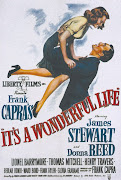
Walt Disney / Buena Vista, 1961. Directed by David Swift. Starring Hayley Mills, Maureen O'Hara, Brian Keith, Charlie Ruggles, Una Merkel, Joanna Barnes, and Leo G. Carroll.
Far superior to its unnecessary 1998 remake, the original version of The Parent Trap was one of the favorite movies of our childhood, and as such, we tend to treat it with indulgence when we watch it again as adults. However, the film is good family fun, a movie that never fails to satisfy and that is apt to be enjoyed with your kids and their friends on special gatherings such as Thanksgiving or Christmas. No wonder that this project had a soft place in Walt Disney's heart.
The plot is based on the 1949 book Das Doppelte Lottchen, by the great German children's storyteller Erich Kästner, and it tells the story of twin sisters Sharon and Susan—both played very adroitly by Hayley Mills—who were separated as babies due to the divorce of their parents. When they meet at a summer camp and come to the realization that they're sisters, they decide to make up for lost time by switching places: one goes to California to meet her ranch-owning dad, and the other goes to Boston to see her high-society mom. Their ulterior scheme will be to reunite their parents in the hope that they'll fall in love all over again so that the sisters won't have to live apart. Of course, this role change will bring about many comic scenes that are very well developed and put together. Brian Keith, who is better known for his work on television than on the silver screen, turns in a delightful performance as a rough-edged but ultimately tender family man. Maureen O'Hara is stunning as his ex-wife, and the movie is graced by very charming appearances by an elderly Charlie Ruggles and by Leo G. Carroll, who plays a particularly funny minister.
On the whole, The Parent Trap is an extremely light-hearted approach to social issues such as divorce and single-parent households, with a rather stereotypical plot that sometimes indulges in slapstick comedy. But beyond that, the premise of the movie—the fact that the sisters have been separated for almost fourteen years without even knowing of each other's existence—is rather grim, and the film isn't without its moments of tenderness and downright hilarity. You'll do your kids (and yourself) a favor if you choose the original over the more modern remake; in our opinion, the quality of this 1961 version is way beyond compare. Oh, and the soundtrack is also quite interesting: Tommy Sands and Annette Funicello sing the title track, while the twins themselves (Hayley Mills, that is!) perform "Let's Get Together," a tune that made enough of an impression on Anton as a kid that he's still looking for the original record of it.
Anton&Erin.



































